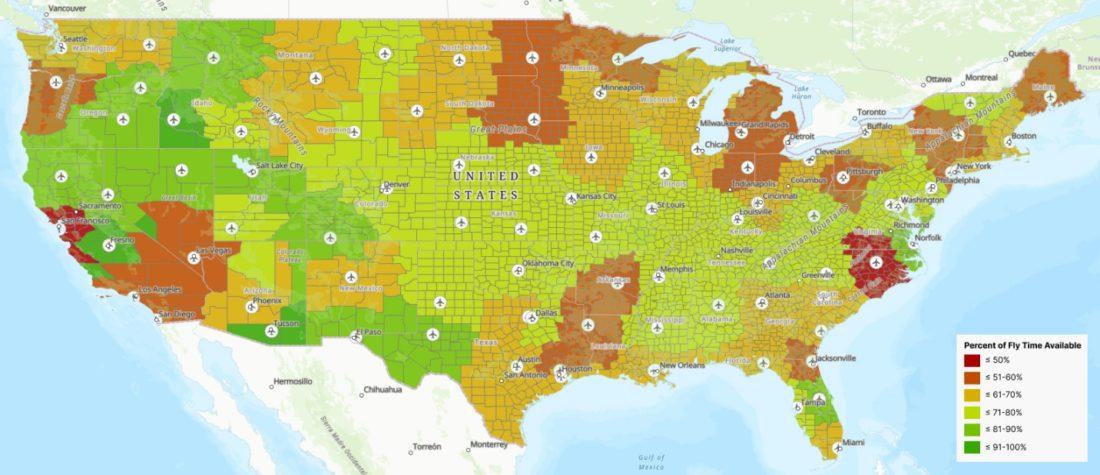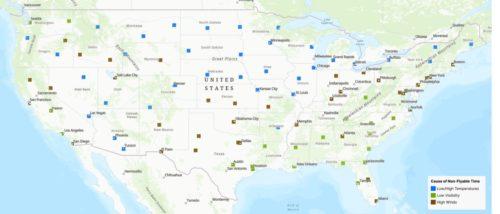Weather or Not – AAM Operators Need to Know
The ability to predict variations in temperature, visibility, wind, and cloud cover will impact AAM operations and profitability.

As advanced air mobility (AAM) and urban air mobility (UAM) operators prepare for takeoff, perhaps the one constant they can count on is weather. From hot today to chilly tomorrow, eVTOL operations are especially sensitive to weather.
Scientists and researchers, Ashima Sharma, Jay Patrikar, Brady Moon, Sebastian Scherer, and Constantine Samaras conducted a study sponsored by TransportLab at the University of Sydney and Transport Research at McGill at McGill University and published the results, “Quantifying the Effect of Weather on Advanced Air Mobility Operations,” in the January 2023 issue of the scientific journal, Findings.
Double or (Practically) Nothing
The team studied local weather conditions (wind, visibility, temperature, and sky conditions) to determine potential adverse effects on AAM operations. They used those factors to help predict the viability (or lack thereof) for AAM operations across various regions of the United States. Specifically, they sought to develop a means to quantify which regions of the U.S. have the greatest potential number of flyable hours and which weather conditions, and in which regions of the country, might lead to significant losses of flyable hours.

A line graph depicting twelve airports around the country in different time zones, and how the number of flight hours available in one day in each month on average varies in different climates, and how each airport compares to the U.S. Mean. The first standard deviation of the mean is shaded in gray. Map courtesy of, and copyright TransportLab and Transport Research at McGill.
The study used Meteorological Aerodrome Reports (METARs) from 2019, which measured 91 airports in the U.S. and filtered them based on Federal Aviation Administration (FAA)-mandated flying conditions and any given vehicle’s physical capabilities. The analysis reveals a striking difference – nearly double – between the most flyable and least flyable areas in the country.
The largest cause of non-flyable hours was cloud cover. The study included Class B, C, D, and E airports and weather conditions ranging from -10°C to 40°C, winds ranging from 10 m/s (≈ 20 knots, visibility about to 3 statute miles and a minimum ceiling of 3000 ft. above ground level (AGL).

A map with the airports color-coded by the reason for the most non-flyable slots at that location, disregarding cloud cover. Map courtesy of, and copyright TransportLab and Transport Research at McGill.
AAM is a Fair Weather Friend
Because the U.S. Midwest experiences extreme cold temperatures during the winter, it figures that it will have the lowest percentage of fly-time. By comparison, the U.S. Southwest is likely to have nearly 100% flyability. And, California’s San Francisco Bay Area, with its constantly shifting micro-climates, is likely to account for a lower percentage of flyable hours than, say, Southern California.
Using the methods identified in their study, the research team believes AAM operators can gain a higher level of understanding of the viability of AAM vehicles in any given geographic location and these findings can also help manufacturers, operators, and regulatory agencies develop more-accurate technical assumptions about AAM capabilities in the future.
Want to continue to stay up-to-date about the latest developments in the eVTOL industry? Subscribe to AeroCar Journal now. It’s FREE (for a limited time)! Join us on Twitter for the latest news, analysis, and insight about the eVTOL industry. AeroCarJ


